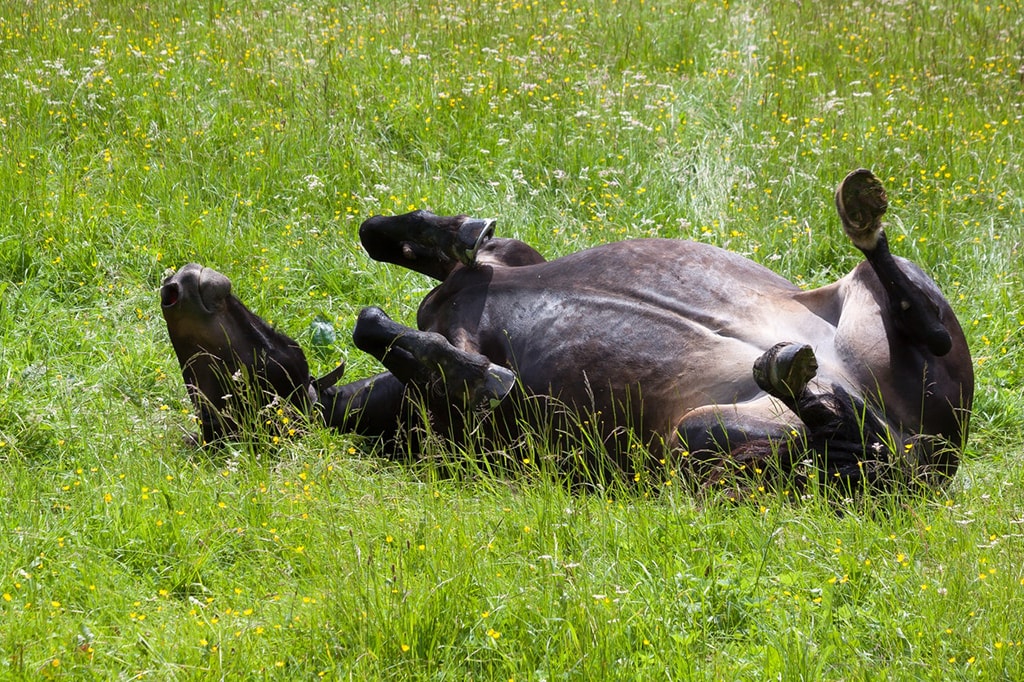Diseases in horses can arise from very different causes, although the most common are transmitted by tick and mosquito bites. Their symptoms are very varied and sometimes it is very easy to notice them because we find our horse sad, with his head low, expressionless and with the color off, but not always so. Neither should we let that end to be realized. Keep reading and we will help you know if your horse is healthy.
How to detect that your horse is not right?
When your horse is healthy you see it in its appearance and its behavior. A horse that enjoys health has bright and clean eyes, eats all food, has a pulse between 28 and 42 beats per minute at rest, its temperature is close to 37,5 ° C and shows a shiny hair and no excessive fall as well as standing firm on all four legs. When one of these points fails, it can be a great sign that something is happening.
If your horse is ill the thing changes, his appearance becomes sad, tired and dejected and his eyes become pale and expressionless as with his coat, which loses its brightness and begins to fall more than normal. It also changes your attitude as it shows less energy and more desire to remain lying down. In addition, it can give more evident signs like to show pain when touching it, to have some inflamed zone, to sweat excessively, to be restless for no apparent reason, to limp or to have the helmet in bad condition.

Sad and dull eyes is one of the symptoms that your horse might be sick
If you have any of these symptoms or if you see something that goes out of the ordinary, you should notify your horse veterinarian and get out of doubt as soon as possible.
Some of the most common diseases that we can encounter are:
- Colic. It is the most frequent disease and is caused by a disorder in the digestive tract that may simply be due to a sudden change in the animal’s diet, among other causes. The horse usually shows clear symptoms of restlessness, scraping or scratching the ground, distressing looks, frequent changes of position and even wallowing.
- Cushing’s disease. A disease that affects the endocrine system of the animal and occurs more frequently in old horses, which often makes difficult their diagnosis because many owners think their symptoms are due to age. These are: thirst, out-of-normal appetite, weight loss despite eating normally and frequent urination.
- Tetanus. Disease caused by bacteria upon contact with a horse’s wound. At first it will show symptoms such as colic and stiffness in the muscles followed by spasms in the neck, hind legs, jaw and in the area near the wound. It is necessary to clean the wound well and administer antibiotics to control the infection.
- Equine encephalitis. Caused by mosquito bites. Initially it shows with a high fever that lasts of two to three days. Subsequently, the horse loses coordination, muscle control and, in a final phase, can even give convulsions and paralysis. It is a disease with limited treatments so preventing is best having vaccinated to protect and avoid it.
- West Nile fever. It is another disease caused by mosquitoes through their bite after having bitten an infected bird. As with equine encephalitis, its symptoms are similar and it is best to have it vaccinated.
- Influenza. It is another very common disease that is easy to detect because the horse shows a marked deterioration in appearance with symptoms such as mucus, watery eyes, fever, cough and lack of appetite.
We can find many other diseases in horses such as arthritis in horses, melanomas, degenerative joint disease, equine gastric ulcer syndrome…









No Comments